A Few Notes on the Los Angeles-Model Favela
illustrated
After California’s Christian Bale character of a governor-player said this week that state and city officials were going to prioritize the urgent cleanup of freeway-adjacent homeless encampments that pose a fire risk, I visited a few of the closest examples in my unique corner of Los Angeles to see how the project is going. Short answer: it’s not. It’s a symbol-project, not an effort-project. I was shocked to discover this, of course.
Touring, it occurred to me that readers who don’t live in Los Angeles or Somalia might not be familiar with our “homeless encampments,” which tend to not be encampments. You’re picturing a guy in a tent, and that’s…not it. I mean, there are people in tents, but. This is from an “encampment” along the 110 freeway, near 43rd Street in Highland Park, Tuesday afternoon, between the freeway and a concrete river channel (click to enlarge):
These are buildings, multi-room structures made of scrap plywood and looted construction lumber. Note the multiple ladders and the bicycle in the river channel, LA’s homeless freeway between the freeways. Here’s one of those structures from the other side of the freeway, heavily tarped up on the traffic-facing side, the length of four or five connected rooms:
They tend to have electricity, because things like streetlights have electricity, and wires can be cut and reconnected.
They also make use of fire hydrants for water.
This image….
….is from this story in the Daily Mail, which found homeless encampments where residents had working washing machines running on city electricity and hydrant water.
I took this picture in the Sepulveda Basin, in the San Fernando Valley, in January of 2018, in the middle of an encampment that covered much of a square mile:
That’s a plywood home up in a tree, with additional structures made of plywood and tarps at the base. Nearby, the discarded remnants of the way the people who live in these structures heat their homes and cook their meals:
Butane canisters, used and discarded in piles of dry brush and plywood-cardboard homes. Can’t imagine why we have so many trash fires.
With multiple rooms, hard walls, electricity, and water, encampments lack one important municipal service: garbage pick-up. So garbage is disposed…there, until the city is compelled to come do one big pick-up every few months. From that Sepulveda Basin encampment:
Of course, river channels, being large and conveniently downhill of an encampment, are a good trash can:
The eventual clean-ups require elaborate processes of advanced notice, and this is a picture I took today in Highland Park:
The “major cleaning” was over, so the area looked like this:
And now you have some clear images to go with the term “homeless encampment” when you hear it in the news, particularly in association with a fire.

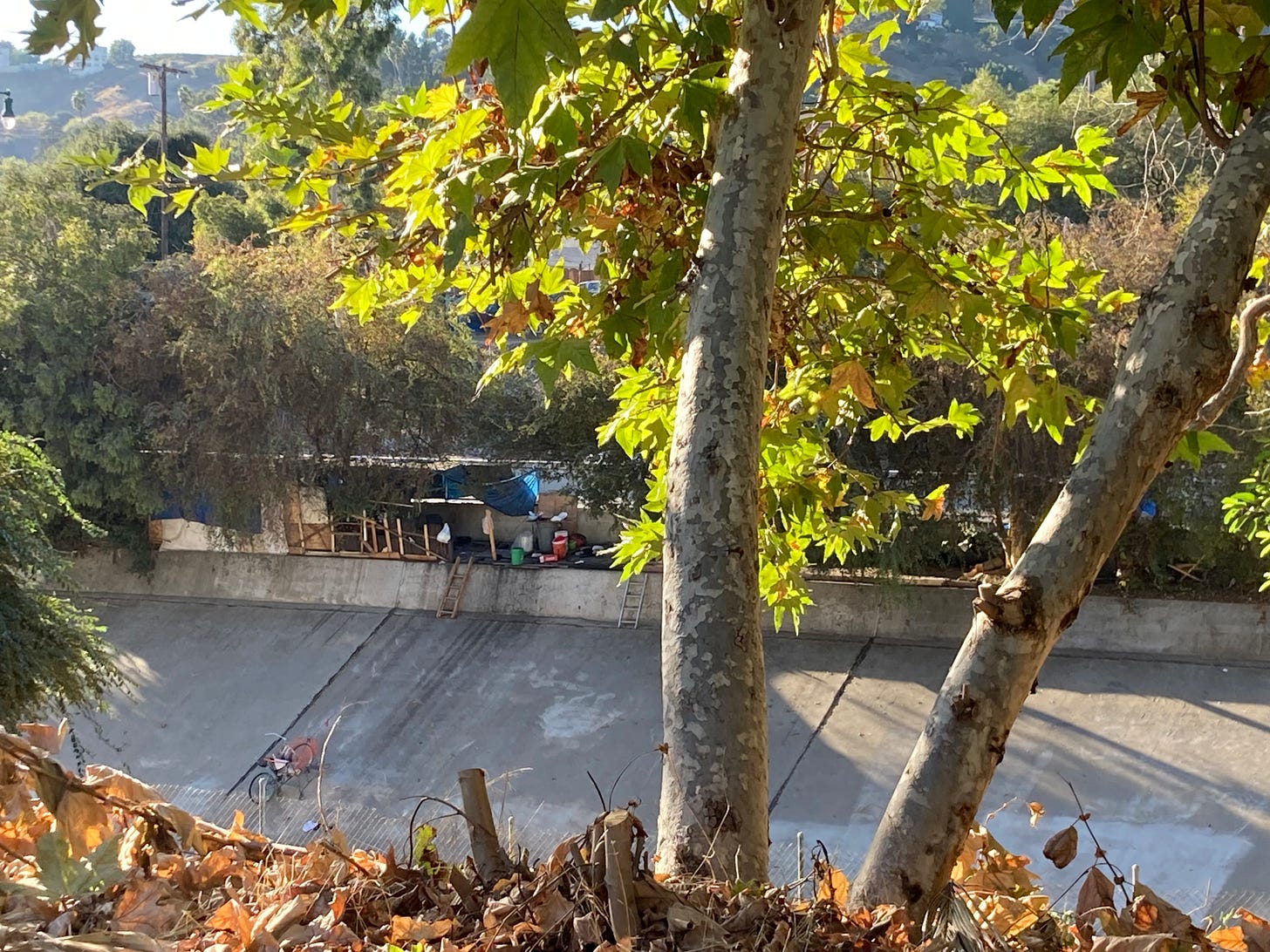
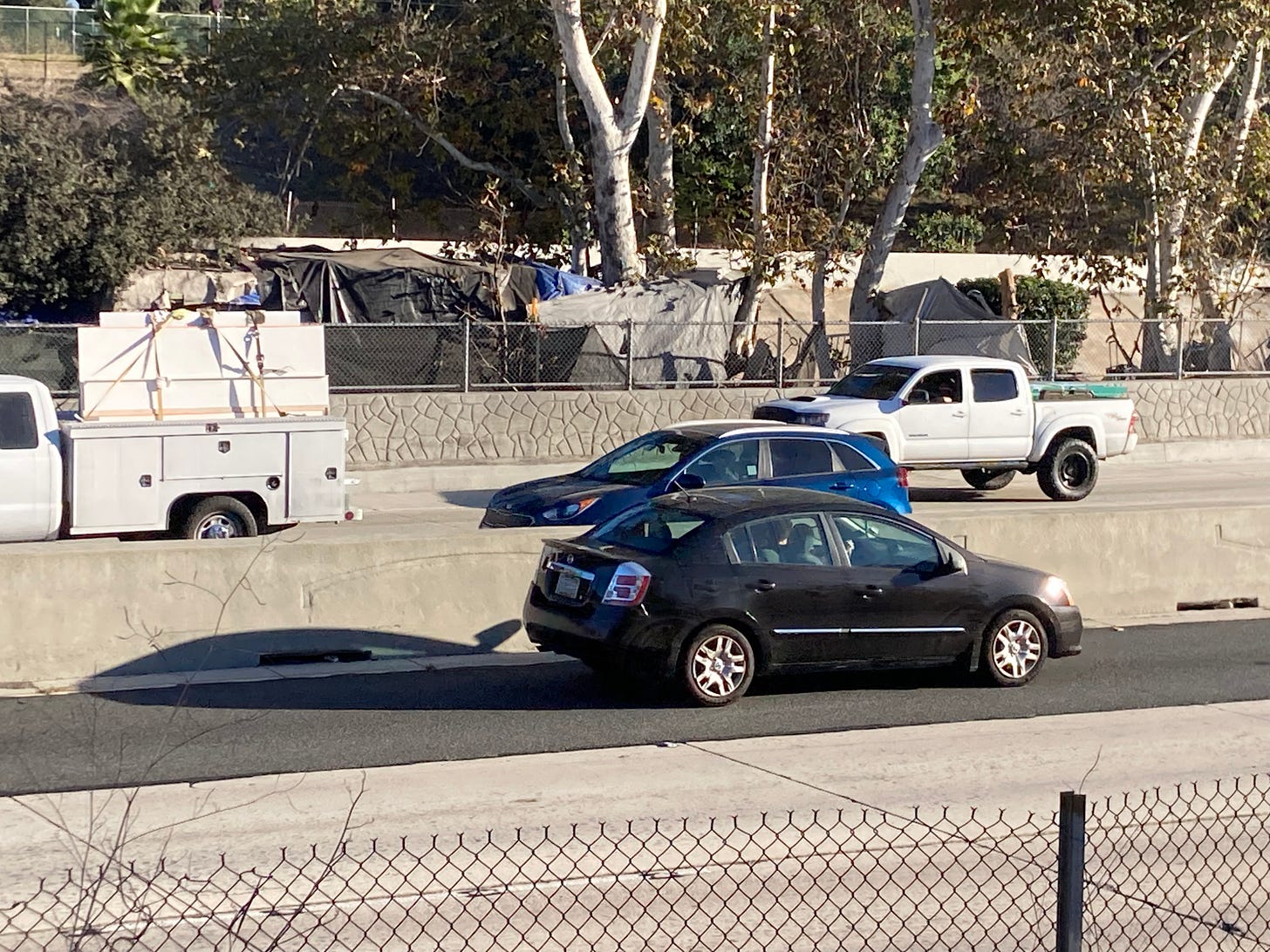

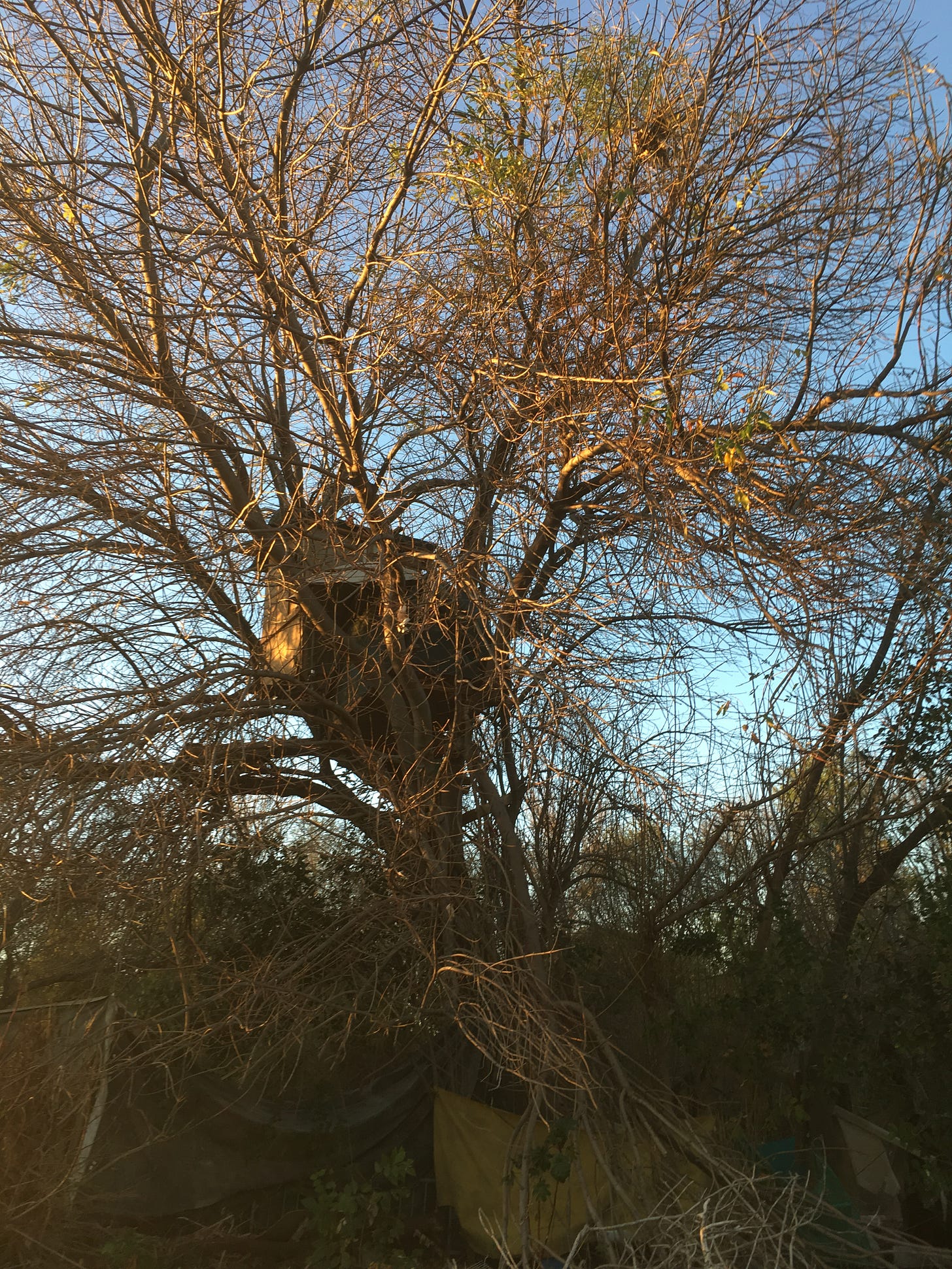
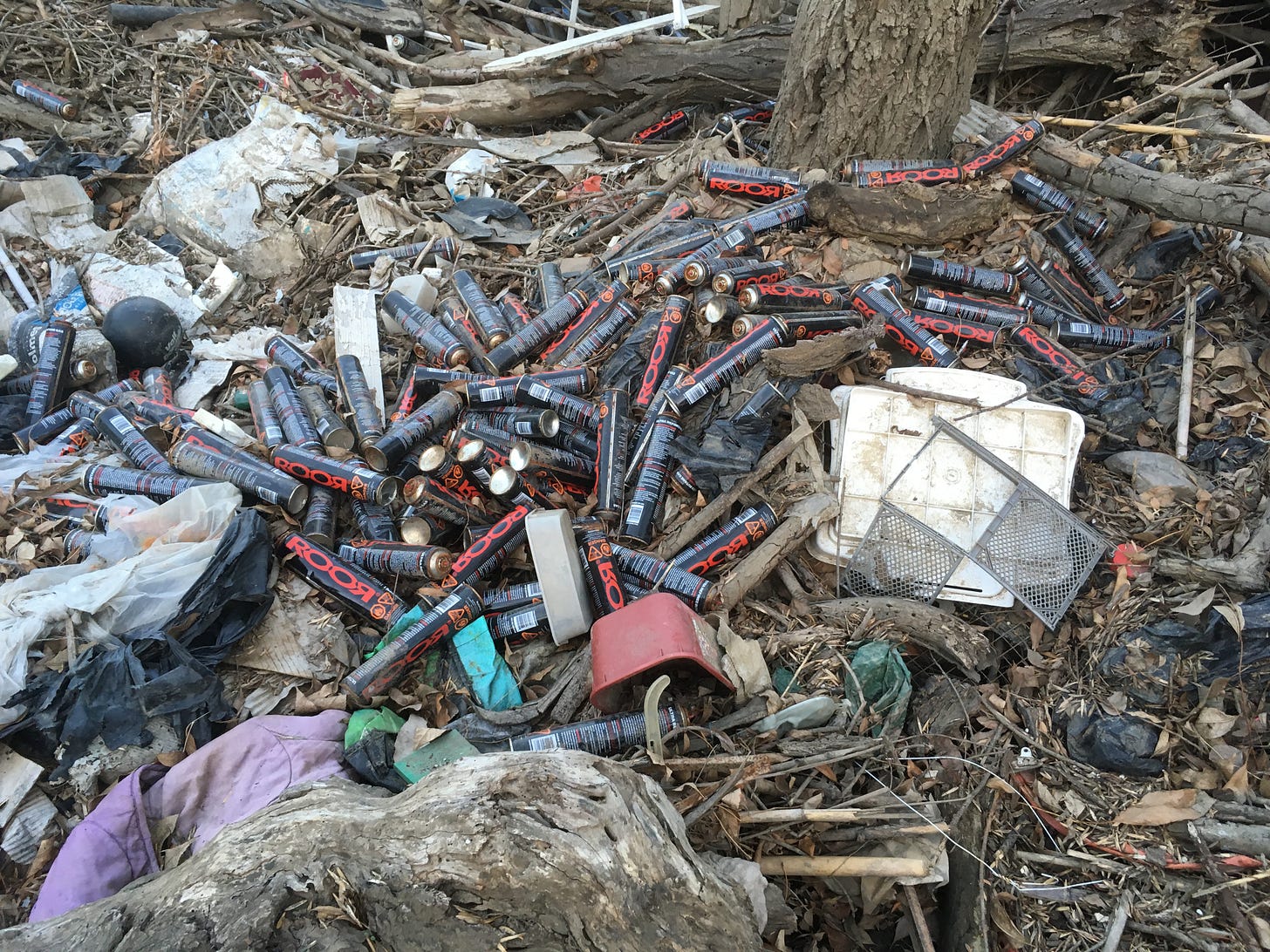
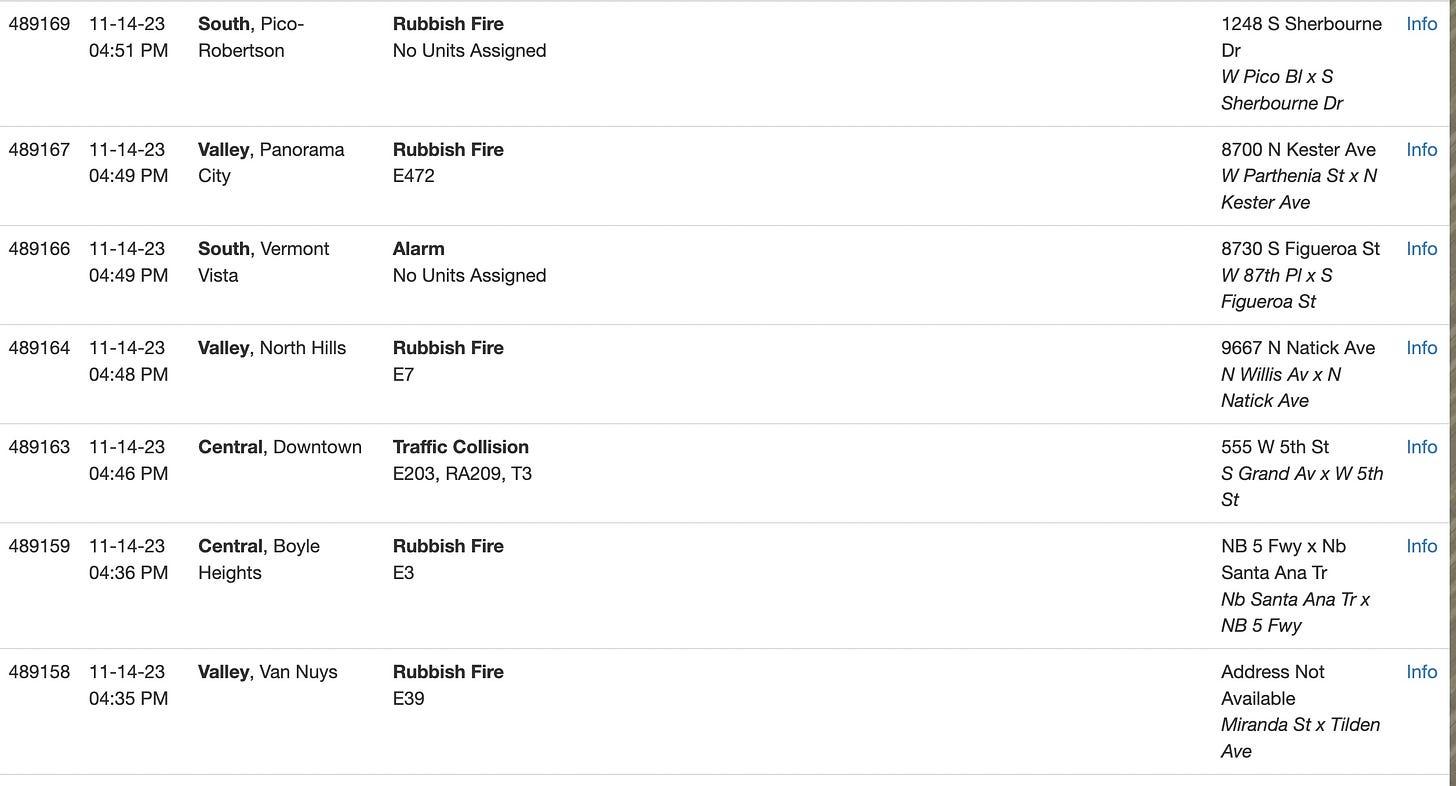
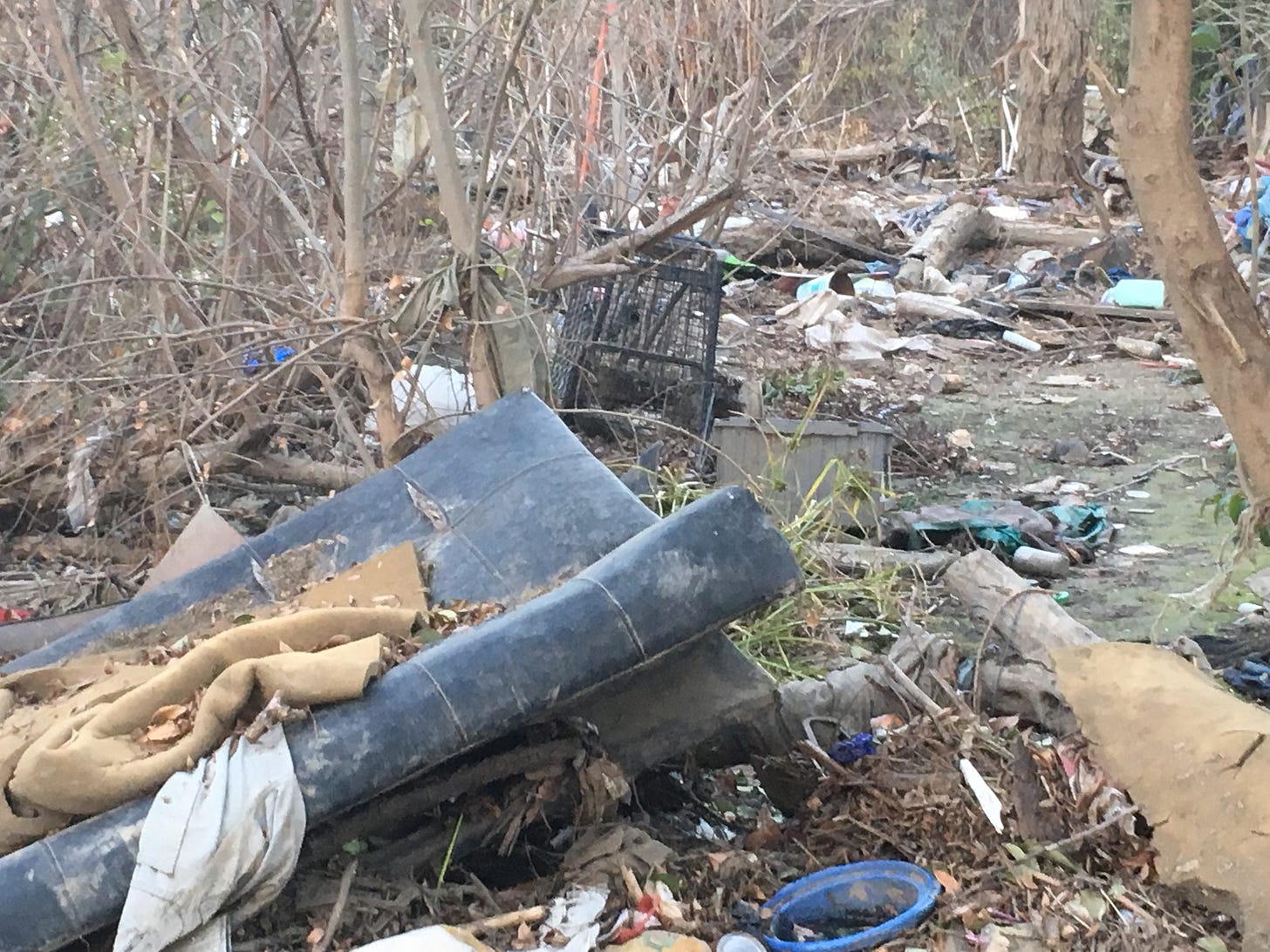
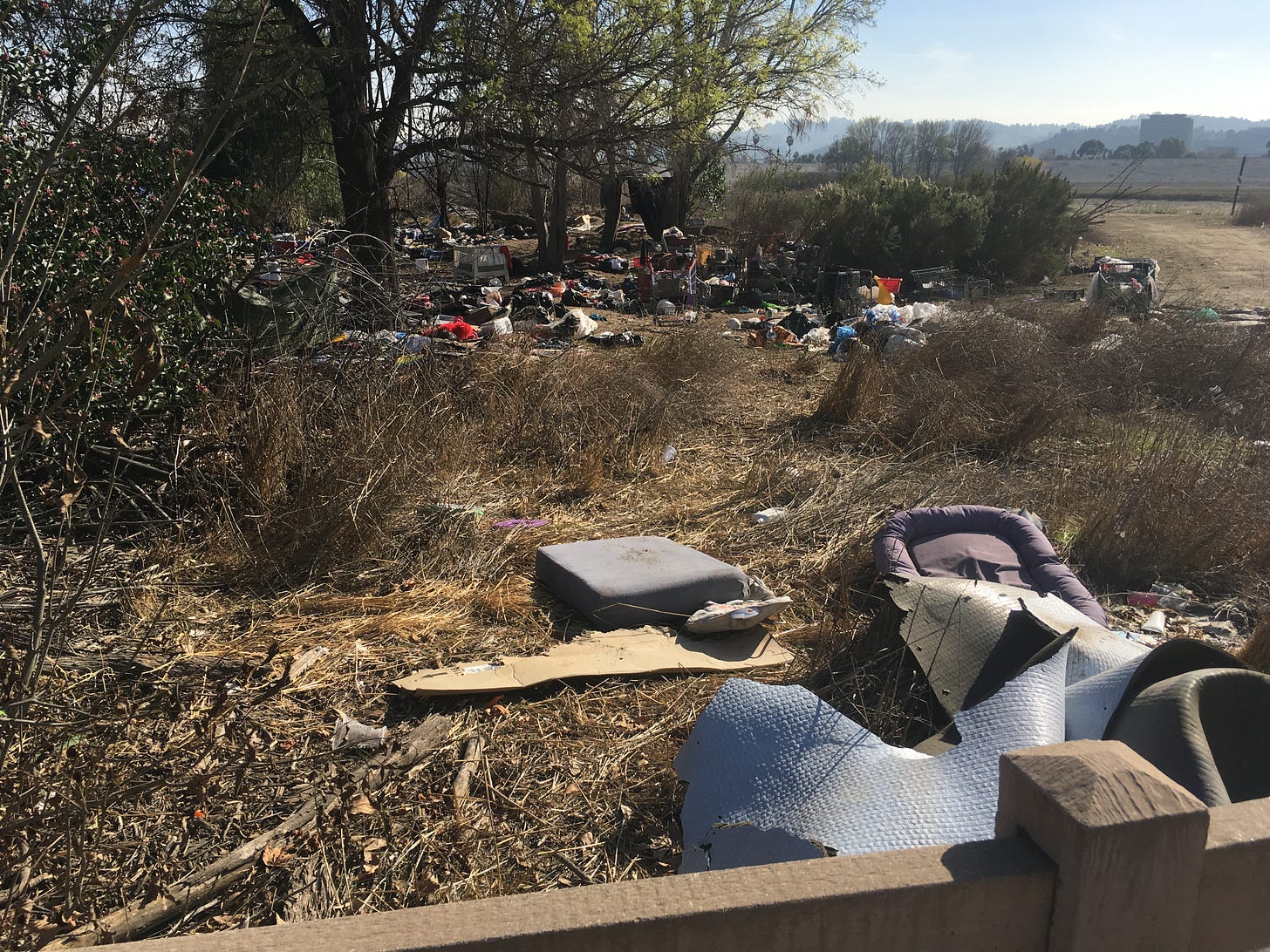

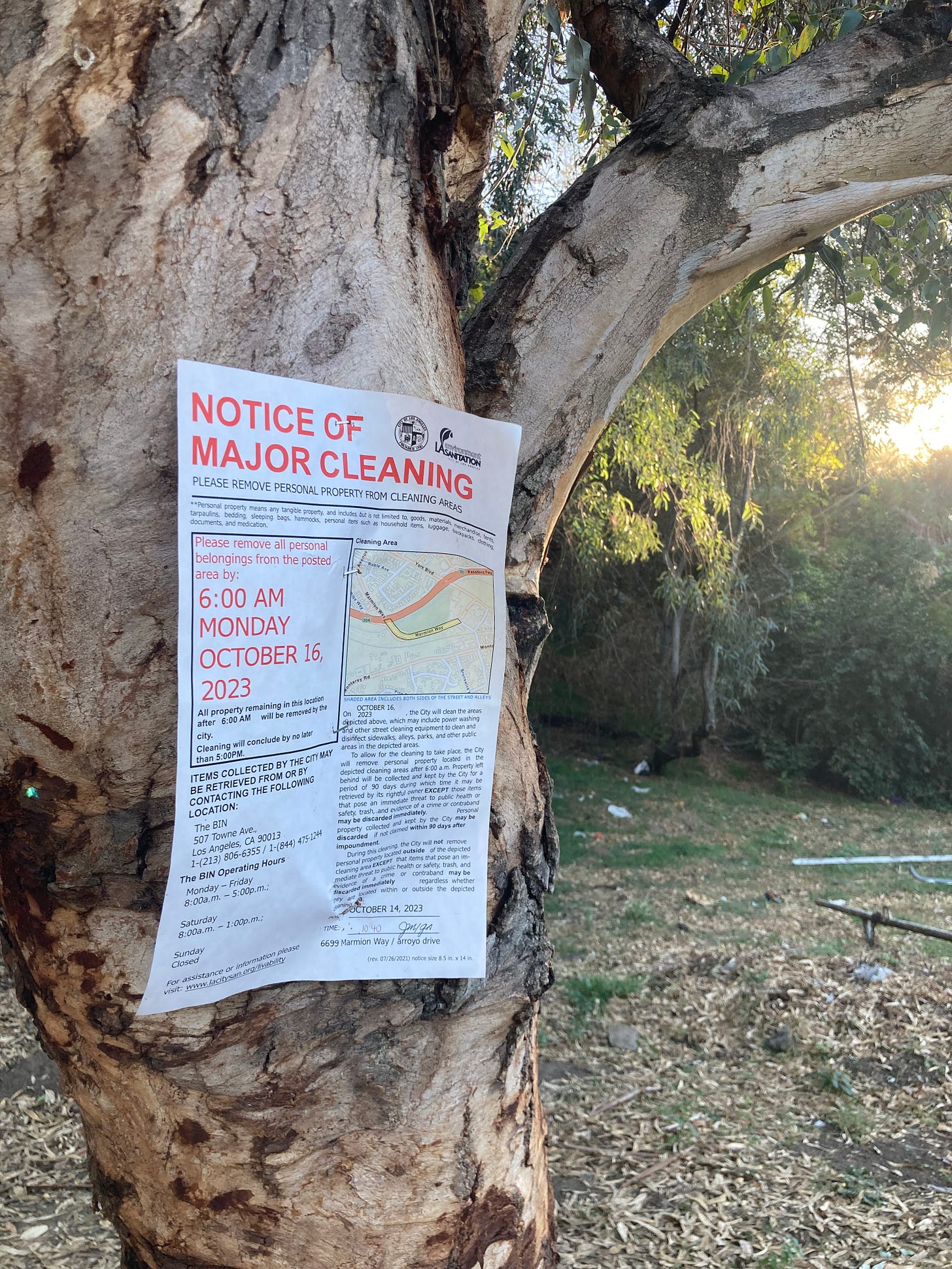
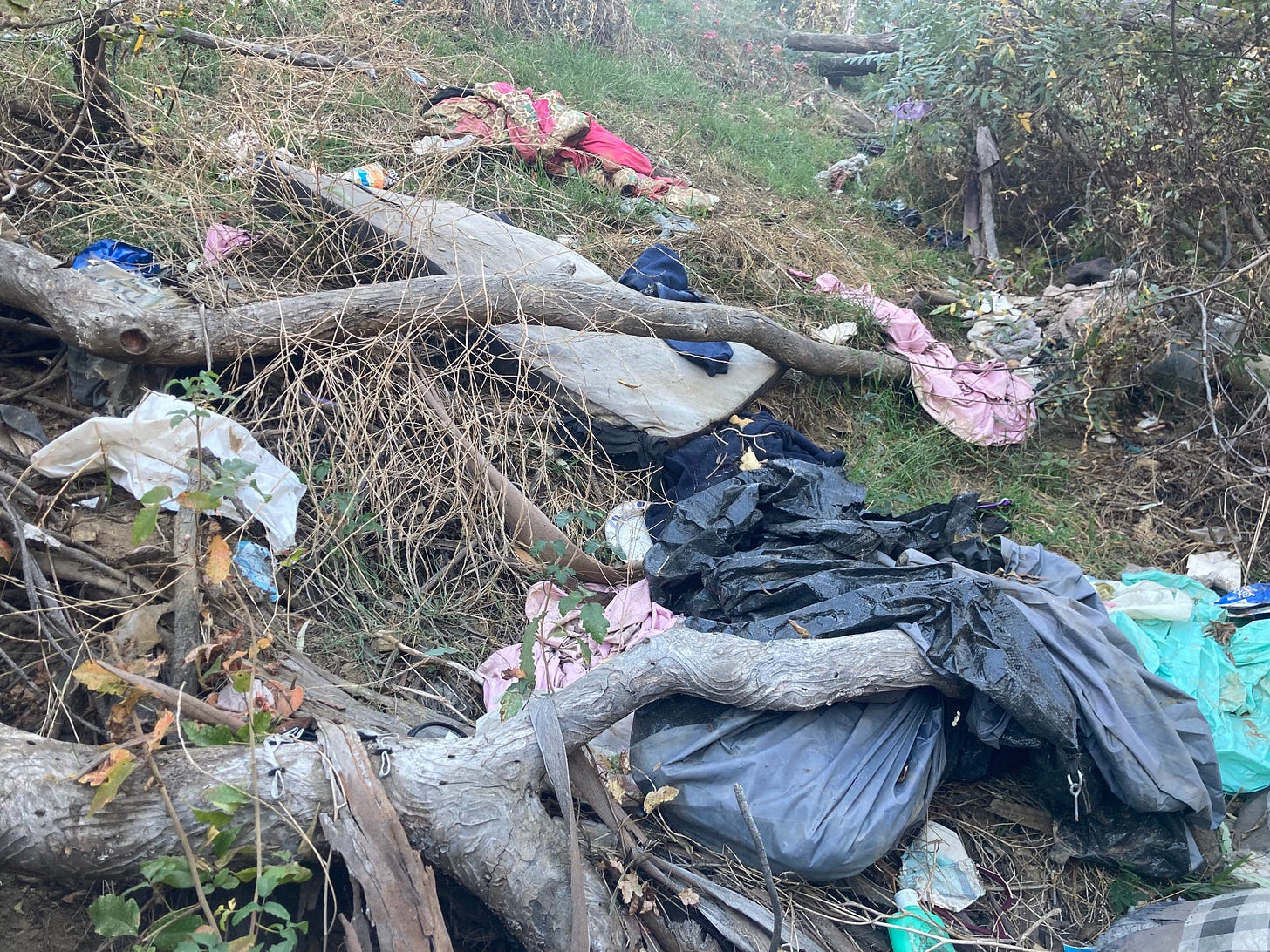
Forgot to mention that I was taking pictures of encampments full of plywood structures and discarded butane canisters in January of 2018 because of the Skirball Fire in December in 2017, which started in a homeless encampment in the hills of Bel-Air:
https://www.theguardian.com/us-news/2017/dec/06/los-angeles-california-fire-interstate-405
I was taking pictures of encampments this week because of the I-10 fire.
Third time will make it a regular habit, I guess.
Great reporting here, Chris! These are similar to the camps we see in Portland as well. Sprawling multi-'family' structures -- many using direct open flame for light/heat/cooking. What could go wrong?
Oh, a massive fire that takes out an entire freeway?
Well, who could have seen that coming?